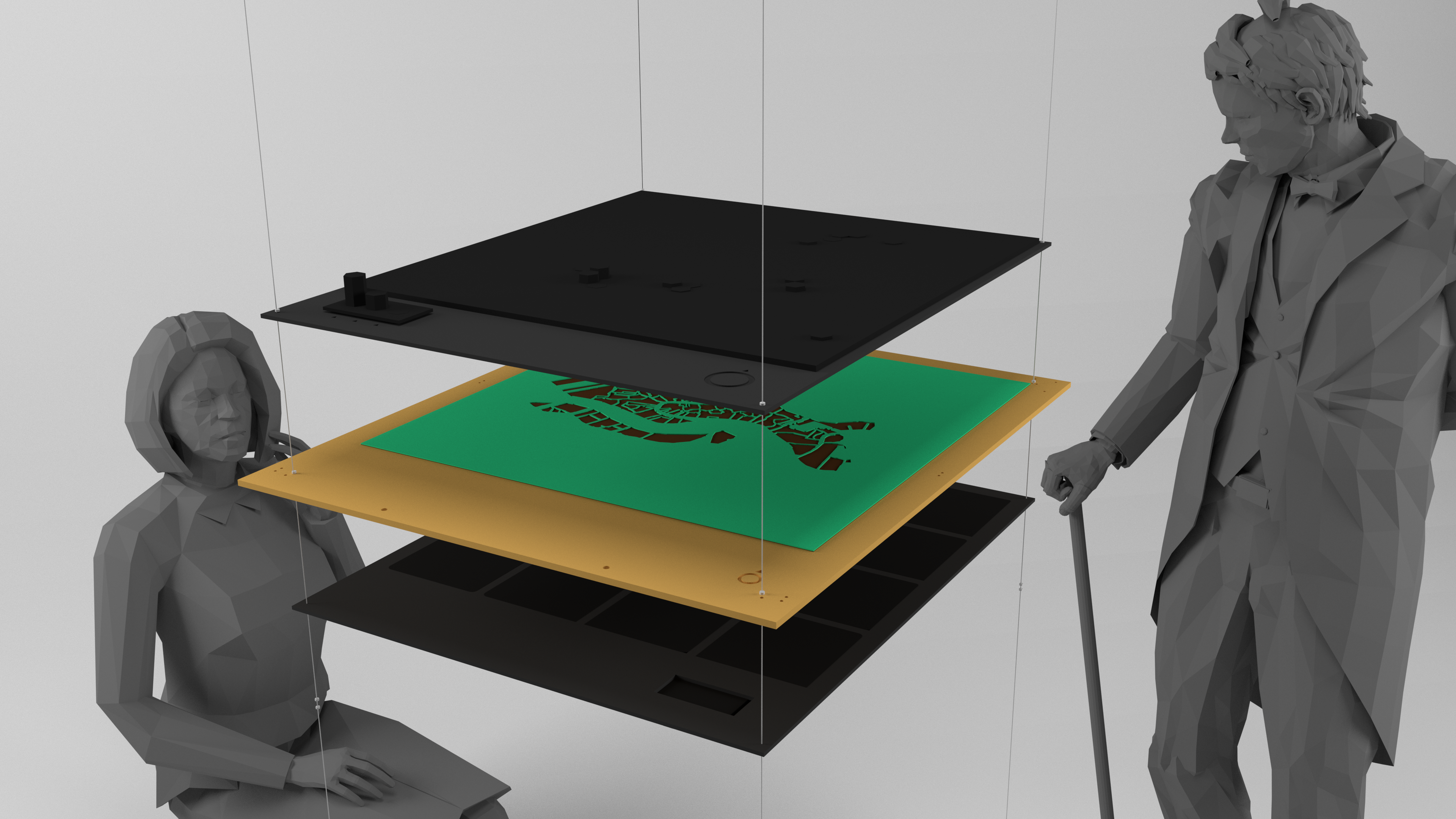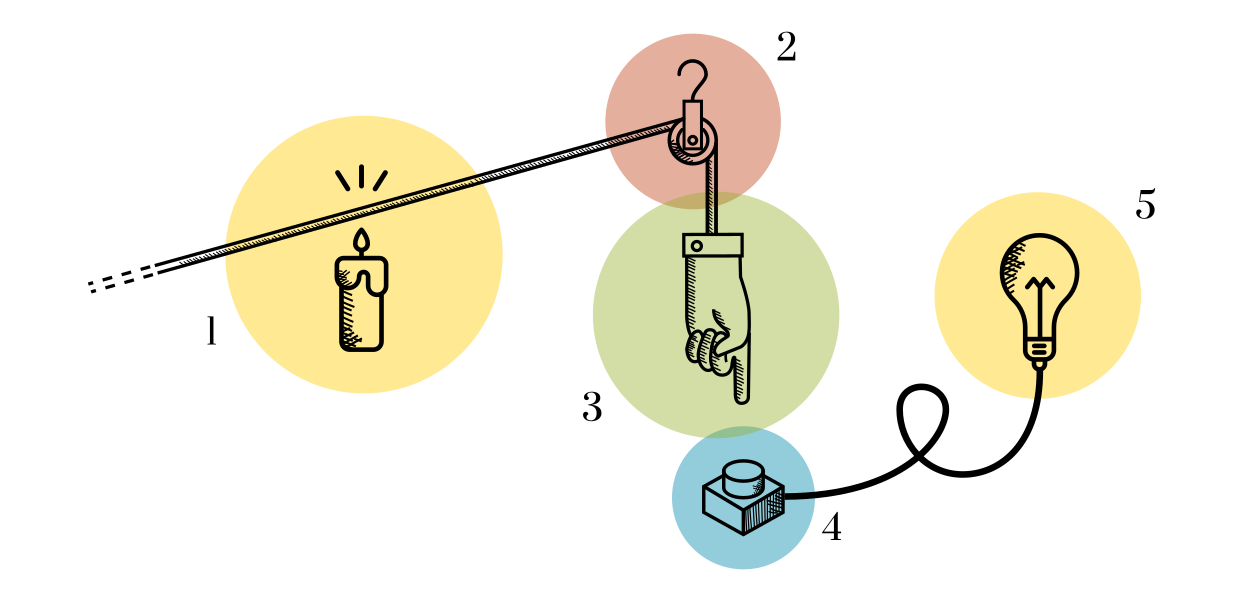Presentation · 3D Data Map

Depending on the setting in which the data installation is hosted, on its lifespan, on the tone of the content, and your available budget, you can complement the installation with other elements that enhance its fruition. The following paragraph lists a few presentation options you could explore further when designing the setting for the news installation. The core idea is that, while the physical installation functions as a hub to present the data supporting your story and to foster social interactions around it, it is not the only one. You can devise ways to make the installation a multimedia one, by embedding print, video, audio components and by referencing back to other online articles of your publication.
- You can arrange the data layers and base map in several different ways to compose the installation. We encourage you to opt for arrangements that allow participants to enjoy it 360: by walking around it, crawling underneath it, moving the data layers easily to reveal the map, etc. A scenario that fits well this type of exploration is having the 3 components hang from the ceiling with a system of wires that allow participants to pull the data layers away or towards the base map, like the main image of this page suggests.
- Add printed panels around the map and, if you have multiple 3D data layers relevant to the topic, you can hang them around the map so that they function as 3D tactile inforgraphics.
- Add QR codes that directly link participants to articles, video, data visualizations, audio, and other materials present on your website, so that the participants can learn more. In this sense, the place where you host the installation could be perceived as a physical/digital archive where participants can navigate through the whole dossier of information a newsroom has on a specific issue.
- Save all the 3D data layers you produce and build a sort of physical data archive, which you can present along with the main map installation.
- Place a projector on top of the installation, so that you can project additional information on the map.
- Organize talks, debates and events. Such events could feature the journalists who have worked on the story; local politicians, public figures, experts and other key people referenced in the story; member of the community wishing to share their opinions on the issue; and so on.
These are some options to say that every installation will in practice be unique to the content and context. And while its fruition is technically the last phase of the project, it should be the very first thing you have in mind before you move on to design, model and build the physical data experiences.












